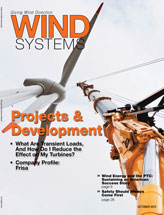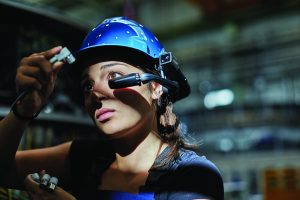When it comes to energy, you can read about what’s new on the device that’s in your pocket. That’s because the Department of Energy (DOE) recently released the second Quadrennial Technology Review (QTR), which explores the current state of technologies in key energy sectors and the R&D opportunities available in the mid-term.
The QTR provides a blueprint for the Energy Department’s energy-technology development and for enabling the science that will make future technology breakthroughs possible. But the QTR also makes it clear that it’s up to us to carry these opportunities through and make them a reality.
Global climate change, which is caused primarily by carbon pollution from energy use, is one of the most significant threats to the well-being of people living now as well as to that of future generations. The QTR identifies game-changing clean and efficient energy technologies that will reduce emissions of the offending substances. The more of these clean-energy options we deploy — in the transportation sector, in industry, in buildings, in electric power generation — the better our chances of avoiding an unmanageable degree of climate change.
 Since the last QTR was published in 2011, the number of large-scale carbon capture and storage demonstration projects has doubled globally. A combined construction and operating license regulatory framework, plus Federal help with financing, is enabling the construction of first four new nuclear reactors in more than 30 years. And renewable energy technologies have dramatically reduced costs and gained market share. And since that first QTR, generation of electricity from solar power has increased tenfold and wind generation of electricity has increased by 50 percent.
Since the last QTR was published in 2011, the number of large-scale carbon capture and storage demonstration projects has doubled globally. A combined construction and operating license regulatory framework, plus Federal help with financing, is enabling the construction of first four new nuclear reactors in more than 30 years. And renewable energy technologies have dramatically reduced costs and gained market share. And since that first QTR, generation of electricity from solar power has increased tenfold and wind generation of electricity has increased by 50 percent.
But it’s not just about the energy we produce. It’s about the energy we save. The nation has embraced energy efficiency as a way to reduce energy use and costs, but substantial efficiency opportunities remain untapped. For example, DOE and the wind energy industry are working on tomorrow’s efficient refrigerators that will be able to react to signals from utilities and use sensors to control changing temperatures while eliminating the need for polluting refrigerants.
Breakthroughs in next-generation high-tech tools, including x-ray light sources and supercomputers, are helping scientists find new ways to deliver cheaper, faster clean-energy innovation. For example, new neutron imaging techniques at DOE laboratories are helping American companies such as Morris Technologies, now GE Aviation, develop fuel efficient, 3D-printed turbine blades for jet engines.
As the American energy landscape transforms, the QTR provides the DOE, the private sector, and research institutions a foundation to inform decisions about the portfolio of R&D investments to explore in the years to come.
As the U.S. heads into the international climate negotiations this fall, the nation is serious about its ambitious commitment to reduce carbon emissions by 26 to 28 percent by 2025. Technologies catalogued in the QTR will be an essential component of making these reductions a reality.
The range of options available to meet our energy needs is increasing, and this diversification creates a more dependable system and offers consumers new choices. For example, rooftop solar power combined with next-generation energy storage will help consumers cut electric bills while supplying the grid clean power during outages. The QTR helps us see what is possible. We can now see what our clean energy future looks like, but we have to keep the momentum going.
— Source: DOE






































